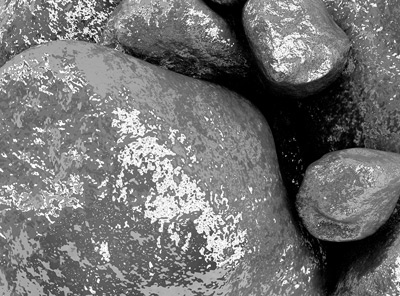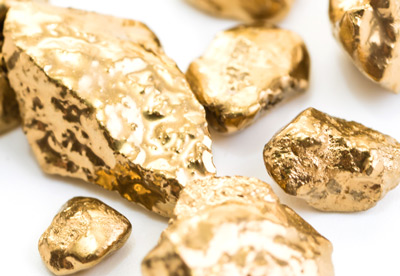Diamond Education
The name diamond is derived from the ancient Greek αδάμας (adámas), “proper”, “unalterable”, “unbreakable”, “untamed”, from ἀ- (a-), “un-” + δαμάω (damáō), “I overpower”, “I tame”. Diamonds are thought to have been first recognized and mined in India, where significant alluvial deposits of the stone could be found many centuries ago along the rivers Penner, Krishna and Godavari. Diamonds have been known in India for at least 3,000 years but most likely 6,000 years.
Diamonds have been treasured as gemstones since their use as religious icons in ancient India. Their usage in engraving tools also dates to early human history. The popularity of diamonds has risen since the 19th century because of increased supply, improved cutting and polishing techniques, growth in the world economy, and innovative and successful advertising campaigns.
Source: Wikipedia
Diamond 4C’s
CUT
Cut is the most important of the 4C’s because it has the biggest impact on how brightly a diamond sparkles. Diamonds are well known for their ability to transmit light and sparkle intensely. Even if a diamond has perfect clarity & grade, it may appear dull if it has a poor cut. When a diamond is cut with the proper proportions, light is returned out of the top of it. If it is cut too shallow, light leaks out of the bottom; too deep and it escapes out of the sides.
COLOR
The second most important of the 4C’s. Color is the first thing the eye notices after the sparkle. A diamond’s color actually refers the its lack of color; the less color, the higher the color grade is. A chemically pure and structurally perfect diamond has no hue and is completely colorless. Many color distinctions of diamonds are so subtle that they are invisible to the untrained eye; however, these distinctions make a very big difference in the quality and price.
CLARITY
Most diamonds have tiny imperfections which are called inclusions. The fewer amount of inclusions and the less visible they are, the higher the clarity grade. Natural diamonds are the result of carbon exposed to massive amounts of heat and pressure deep down in the earth, which can result in inclusions (internal) and blemishes, which are external. Figuring diamond clarity involves determining the number, size, and position of these characteristics. Even though no diamond is completely pure, the closer you get, the higher it’s value.
CARAT
Carat is the most misunderstood of the 4C’s. Carat refers to a diamond’s weight, not its size! A metric “carat” is defined as 200 milligrams. Consider cut & carat together, a larger carat diamond with a poor cut grade can appear smaller than a smaller diamond with a higher cut grade. It’s important to remember that a diamond’s value is determined using all 4Cs, not just carat weight- two diamonds of equal carat weight can have very different values (and prices) once the other 3Cs are considered.
Here at Greenleaf’s, we like to add a 5th ‘C’: CONFIDENCE.
When you shop smart with Greenleaf’s Jewelry, you will feel confident that your jeweler is qualified & fair, so you will feel educated enough to make an informed choice that is right for you.
Care
- Clean diamond regularly: Bring your diamonds into the store every 6 months to be professionally cleaned and checked for safety (loose stones, worn or missing prongs, wear on mounting). On a weekly basis, it’s best to soak your diamond in warm water with a few drops of mild dish soap. Lightly scrub with a soft toothbrush to remove any excess dirt & oil. Be aware when scrubbing antique or estate jewelry to use a soft touch. Then, just rinse the diamond with warm water and wipe with a soft, lint-free cloth.
- Don’t wear it while doing rough or rigorous work, especially when using your hands often.
- Don’t use harmful solutions. Don’t let your diamond come in contact with a chlorine bleach, it can damage and discolor the mounting.
Gemstone Education:
A gemstone (also called a gem, fine gem, jewel, precious stone, or semi-precious stone) is a piece of mineral crystal which, in cut and polished form, is used to make jewelry or other adornments. However, certain rocks (such as lapis lazuli, opal, and jade) or organic materials that are not minerals (such as amber, jet, and pearl) are also used for jewelry and are therefore often considered to be gemstones as well. Most gemstones are hard, but some soft minerals are used in jewelry because of their luster or other physical properties that have aesthetic value. Rarity is another characteristic that lends value to a gemstone.
Source: Wikipedia
Precious stones include Diamond, Rubies, Emeralds & Sapphires.
All other gemstones are considered “Semiprecious”: to name a few but not all,
- Tanzanite
- Amethyst
- Topaz
- Opal
- Quartz
- Peridot
- Garnet
- Aquamarine
- Citrine
- Alexandrite
- Tourmaline
The terms “precious” & “semiprecious” were introduced in the mid-19th century to classify gemstones that were valuable, popular, beautiful and rare. Although technically only 4 stones are considered “precious”, there really is not a big difference between those and semiprecious stones.
Color: A gemstone’s color refers to the natural tone & hue. Gemstones of the highest value have heavily saturated color. Many gems are also enhanced in labs to improve their colorations.
Cut: Like diamonds, a superior cut is marked by how well the gemstone can reflect light, how symmetrical it is, and its luster. A 5-tier rating system describes the quality of a gemstone’s cut- excellent, very good, good, fair, or poor.
Clarity: Clarity refers to the amount of inclusions and their visibility in the stone. High quality gemstones are relatively clear to the naked eye while precious gemstones can have come degree of naturally occurring inclusions- these can look cloudy. Gems that are completely clear with no visible inclusions are most likely manmade stones.
Size: Same as diamonds, a gemstone’s size is described by its millimeter measurements, rather than its weight. This is because different stone’s compositions can vary in density.
Care: While most gemstones are durable enough for everyday wear, other gemstones may need special care. Harsh chemicals, abrasive surfaces, and sharp blows can damage even the most durable of gemstones. Clean on a regular basis with warm water and mild dish soap. Don’t forget to bring your jewelry in every 6 months for a safety check (loose stones, missing prongs, worn mounting) and professional cleaning!
Pearl Education:
A pearl is a hard object produced within the soft tissue (specifically the mantle) of a living shelled mollusk or another animal, such as a conulariid. Just like the shell of a mollusk, a pearl is composed of calcium carbonate (mainly aragonite or a mixture of aragonite and calcite) in minute crystalline form, which has been deposited in concentric layers. The ideal pearl is perfectly round and smooth, but many other shapes, known as baroque pearls, can occur. The finest quality natural pearls have been highly valued as gemstones and objects of beauty for many centuries. Because of this, pearl has become a metaphor for something rare, fine, admirable and valuable.
Source: Wikipedia
What is a cultured pearl?
Natural pearls are so rarely found in nature, that most pearls sold today are cultured. Cultured pearls are created when a tiny bead is implanted into the oyster. Over time, the oyster coats the bead in several layers of natural minerals and proteins, which gives pearls their luster & color.
Types:

Akoya Pearls have been grown off the coast of Japan for over 100 years. When you picture a strand of classic white pearls, you’re most likely thinking of Akoya.
Freshwater: The Fashion-Forward Pearl
Known for white and pastel colors, and untraditional shapes Freshwater pearls are the most affordable. The are often dyed a variety of colors and shapes.
Tahitian: The Dark, Exotic Pearl
Tahitian pearls are the only naturally dark pearl and are quite rare. Grown in the French Polynesia, Tahitian pearls generally come in dark, almost black colors.
South Sea: The Rolls Royce of Pearls
Grown primarily in Australia, the Philippines, and Indonesia, South Sea Pearls range in color. The Rolls Royce of Pearls are the largest saltwater pearls grown today. Because of their size, perfectly round ones are extremely rare. More common shapes are drops, baroques, and ovals are still considered very valuable.
Care: Pearls are the world’s ONLY organic gemstone, so you must be delicate when caring for them. Products like perfume or hairspray can really damage the luster of a pearl. Wipe with a soft cloth and store them separate from other jewelry to avoid their tender surfaces being scratched.

 Platinum: Naturally white. Never fades or changes color and will last forever. It’s density and durability makes it the most secure metal for a setting with diamonds or gemstones. Platinum is very rare; in fact, it’s 30 times more so than gold. Though it’s the strongest of all the metals used in jewelry, it’s very malleable and can get scratched.
Platinum: Naturally white. Never fades or changes color and will last forever. It’s density and durability makes it the most secure metal for a setting with diamonds or gemstones. Platinum is very rare; in fact, it’s 30 times more so than gold. Though it’s the strongest of all the metals used in jewelry, it’s very malleable and can get scratched. Gold: Found naturally in a distinct yellow color. Gold is resistant to rust, tarnish, & corrosion.
Gold: Found naturally in a distinct yellow color. Gold is resistant to rust, tarnish, & corrosion. Silver: Pure silver is quite soft and very malleable, making it really easy to damage. Because of this, silver is commonly alloyed with other metals to produce a more durable product. Sterling Silver is the standard for high-quality silver jewelry. It’s over 90% pure silver, mixed with alloys to add strength and durability. Sterling Silver also won’t wear down, as silver plating can do. The price of silver is determined by the labor, craftsmanship and design. Care should be taken regularly to prevent silver tarnish from building up and to keep it bright and sparkling.
Silver: Pure silver is quite soft and very malleable, making it really easy to damage. Because of this, silver is commonly alloyed with other metals to produce a more durable product. Sterling Silver is the standard for high-quality silver jewelry. It’s over 90% pure silver, mixed with alloys to add strength and durability. Sterling Silver also won’t wear down, as silver plating can do. The price of silver is determined by the labor, craftsmanship and design. Care should be taken regularly to prevent silver tarnish from building up and to keep it bright and sparkling.